
Working with Contractors
The Block Way of Renovating: A Complete Homeowner’s Guide
11.24.2025

In This Article
Renovations are notoriously complex—every step, from deciding on your design scheme to securing permits to hiring a contractor, is filled with potential challenges. And yet when you successfully complete a renovation and end up with the space of your dreams, it’s one of the most satisfying feelings in the world. So how do you get from point A to point B without driving yourself crazy in the process?
It all comes down to proper planning. The right preparation can turn what often feels like an overwhelming process into one that’s organized, empowering, and even enjoyable.
At Block Renovation, we believe homeowners should feel confident and in control at every stage. That means having clarity around your goals, your budget, and your timeline—and working with trusted professionals who share your vision. Whether you’re remodeling a bathroom, reimagining a kitchen, or tackling your dream home from top to bottom, setting up the right foundation from the start makes all the difference.
In this guide, we show you the Block Renovation way of renovating your home—filled with expert insights from our team—to help you understand how to set yourself up for success, budget smart, hire the right team, and end up with the ideal space for you and your family. Let’s dive in.
You have a vision of what you want your dream space to look like. But how do you turn that into a real, actionable plan that will determine the work that your contractors do and how much money you spend on the project?
It all comes down to creating a great project scope. It should specify every element of the renovation—demolition, plumbing and electrical work, tile installation, fixture replacement, cabinetry, lighting, and painting. If you want some assistance imagining the work you want done, Block’s Renovation Studio can help you visualize these decisions—seeing, for instance, how adding a built-in shower niche or upgrading to marble tile affects your total cost estimate.
You should try to get as clear of an idea as possible of your desired project scope before you start work—if you’re renovating a bathroom, do you need to relocate any plumbing fixtures like the shower or toilet? That typically adds cost and complexity. Are you happy with the existing kitchen cabinet boxes but want to replace the cabinet fronts? That will keep your materials costs down.
When you partner with Block, you will get matched with up to four vetted local contractors who will prepare detailed proposals for your project. You will have a chance to compare them side by side with your project planner to make sure that everything is accounted for and you are educated about what you’ll be paying for before demolition starts.
Block tip: “We're very big components of making sure you're getting a quote for your specific scope,” explains Block Renovation expert Danny Wang. “Everything you want to do in your space, let’s write it out and make sure that you’re getting a quote from a contractor for that specific thing.” The more detailed your scope is from the jump, the less likely your team will need to submit a change order later on, which could increase costs.

"Team up with a contractor or designer early so you don’t find out mid-demo that your dream induction cooktop needs a new electrical line."
— Sorina Panfil, Block-vetted contractor
2. Understand local building guidelines and requirements
Renovation regulations can vary dramatically depending on where you live—and overlooking them can lead to expensive rework.
Your local department of buildings will have specific guidelines that you will need to adhere to for any construction work beyond simple cosmetic upgrades. This will require securing different permits depending on the project scope.
Furthermore, your building’s condo or co-op board (if you live in an apartment) or your HOA may require advance notice, licensed contractors, or approved materials (for example, soundproofing membranes under bathroom tile or waterproofing layers behind shower walls).
In addition, if you live in a historic building or district, you may have to adhere to additional regulations.
As you’re getting prepared for your project, it’s important to research these guidelines thoroughly. Block’s vetted contractors are familiar with such requirements and can help you prepare the right documentation before work begins, saving weeks of potential delay.
Block tip: The two most common permits you might need are a plumbing permit and an electrical permit, but the cost of the permits will depend on your specific scope of work. For instance, if you are just renovating one bathroom, you will pay less than if you are renovating multiple bathrooms and a kitchen at once, as those would require multiple permits.
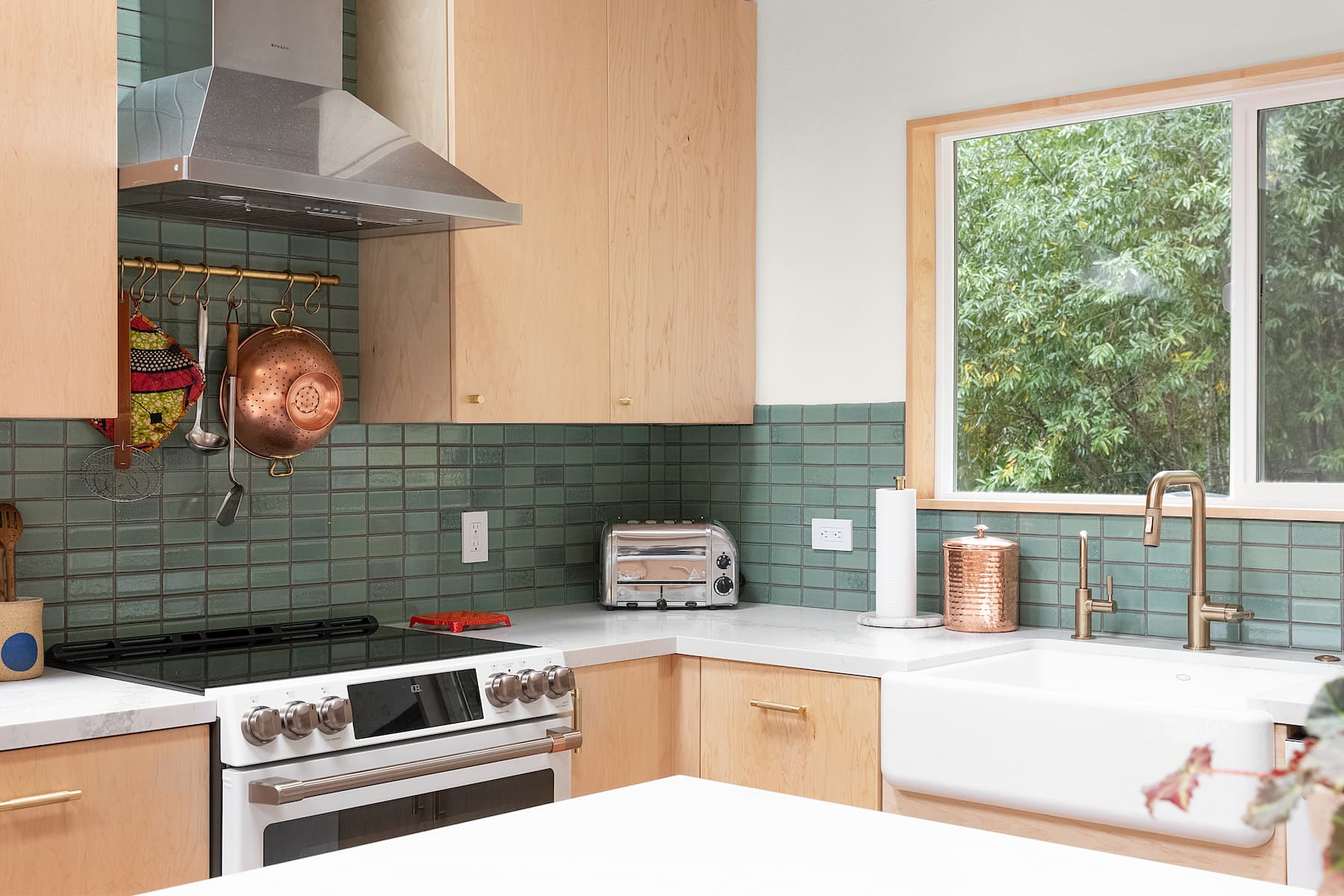
It’s tempting to fall in love with design inspiration before you’ve priced it out—but material selection is where many budgets start to drift.
If you’re choosing between ceramic and porcelain tile, for instance, you’ll want to know that porcelain is denser and often pricier to install because it’s harder to cut. Custom cabinets can triple your cost compared to semi-custom or ready-to-assemble options. Even small choices—like switching from matte to high-gloss paint or opting for solid-brass fixtures—can change both the timeline and the budget.
Using Renovation Studio, you can experiment with different layouts, tile patterns, and finishes, and immediately see how each change influences your cost estimate. This clarity helps you make design choices that feel exciting and sustainable for your budget.
When it comes to making the actual product selections, you may feel you need some help from a professional. That’s where Block’s design services can come in handy—if you opt into this package, you’ll be connected with a professional designer for a 1x1 consultation that includes creating a materials list for you.
Block tip: “Team up with a contractor or designer early so you don’t find out mid-demo that your dream induction cooktop needs a new electrical line,” says Sorina Panfil, a Block contractor from Art Deco Enterprises. “Know your must-haves, and pick your materials before demo day.”
Bring Your Dream Bathroom to Life

Even a more straightforward renovation involves multiple phases—design, permitting, demolition, rough-in work, finishing, and inspections. A typical bathroom renovation, for example, might take 6–8 weeks:
But this timeline will only be possible if you are starting out with all your material procured and ready to go, leaving extra time for materials that are back-ordered or custom-made (a common issue with imported stone or custom cabinetry).
Furthermore, you should budget around one to three months to secure the appropriate permits and approvals, though this can vary based on your project and location. For major, whole-home renovations, the wait may be up to six months or even longer.
Your contractor should provide a clear schedule that outlines each stage, plus regular updates if conditions change. A reliable partner keeps communication open—so if tile delivery is delayed, you can adjust expectations without losing momentum. Here’s a general timeline for projects that may help you with rough planning—but your specific timeline will depend on your project scope.
|
Project Type |
Typical Total Duration |
| Bathroom | 6–12 weeks |
| Kitchen | 8–16 weeks |
| Basement | 10–20 weeks |
| Whole home remodel | 6–12 months |
| ADU | 8–18 months |
Block tip:
Back orders and other shipping delays can knock renovation timelines out of whack, leading to expensive lags in construction that you’ll end up paying more for. Invest time up front into making your material and design purchases ahead of time (and finding a safe place to store them until they’re needed by your contractor) to avoid this scenario.
“Something that we always tell our clients: It’s [only going to be on time] if the minute I open your walls, everything in the garage is waiting for me,” explains Block contractor Karen Torres of Andes Project Contractor Corporation. “If you don’t have [all the materials] there, then I can assure you your project’s going to go longer.”
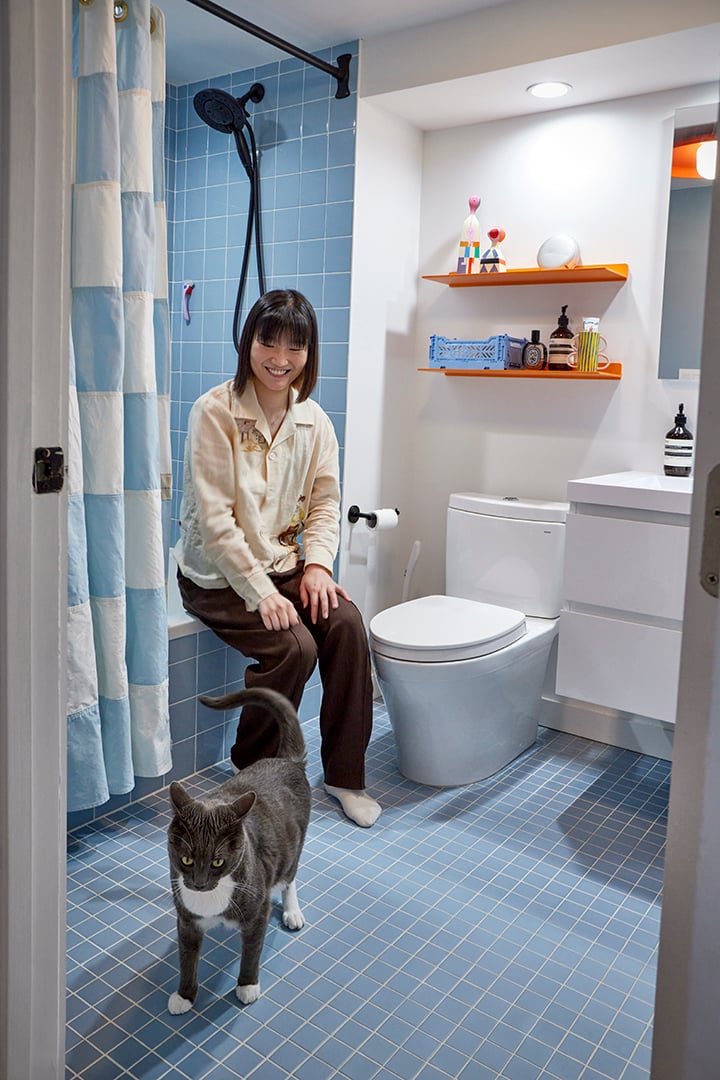
A realistic budget isn’t just a number—it’s a roadmap that determines how smoothly your renovation goes. By understanding what drives costs and planning for the unexpected, you can make smart choices that keep your project on track and your stress levels low.
Local factors that influence cost
Where you live plays a major role in how much your renovation will cost. Labor rates, permit fees, and even delivery costs can vary from one neighborhood to the next.
In New York City, for example, a bathroom renovation might fall around $35,000–$45,000, while the same project in a smaller metro area could cost $15,000–$30,000. In denser cities, access challenges—like walk-up buildings, parking limitations, or restricted work hours—can also increase labor time and disposal fees.
Homeowners in suburban areas may face different costs: higher square footage can mean more materials, but easier site access may lower labor costs. Use Block’s Renovation Studio to see location-based pricing in real time, so you understand what’s typical for your zip code before committing to a budget.
Project conditions
The state that your project is in before you begin construction will ultimately impact the cost of the project. Conditions that older buildings often have, such as uneven ceilings, could contribute thousands of dollars to your project, as many of those things will need to be addressed before new features can be introduced. Make sure to do a project walkthrough with your contractor before determining the scope of work so you can incorporate these real conditions into your budget.
Block tip: “Are you in a pre-war building? Are you post-war? Do you have drywall or plaster lath? Do you have asbestos that you need to think through? Those are the existing conditions of your space that ultimately will impact the cost of your project as well,” Danny says.
Know the Cost Before You Start

Labor cost considerations
Labor usually accounts for at least 50–60% of your total renovation budget. “In most projects, this is going to be your biggest bucket of cost,” explains Danny.
Skilled trades require licensed professionals—and their rates vary based on expertise and project complexity. For instance, rerouting electrical wiring to add recessed lighting or moving a sink to a different wall can add thousands of dollars, even though those changes aren’t visible in the final design. It’s worth reviewing your scope line by line with your contractor to understand where your labor dollars are going.
Block’s vetted contractor network gives you confidence that every professional you hire is licensed, insured, and experienced—so you’re paying for high-quality work, not risk or rework.
Block tip: “Typically the labor cost is what we recommend [determining] first, because that's usually pretty fixed,” explains Claire Fitzgerald, a senior project planner for Block. “For a typical bathroom, 70% of your total cost is going to go to the labor and then about 30% will go to materials. And then in the kitchen, it's usually about 50-50.”
Raw and finish materials cost considerations
Compared to labor costs, “materials do have a lot of variation on where you can save versus splurge,” Claire says.
“There's so many options for amazing materials at various price points, but that can also impact the cost of your project,” Danny adds. “For example, if you’re selecting a very expensive, premium tile, that will likely have a really high material cost, but will also probably carry a pretty high labor cost to actually install that product.”
Materials can make or break your budget. A few examples:
Choosing where to splurge and where to save makes a major difference. For example, investing in high-quality plumbing fixtures (which get daily use) and saving on decorative tile (used in smaller quantities) is often a smarter balance than cutting corners on core systems.

"The labor cost is what we recommend determining first, because that's usually pretty fixed. For a typical bathroom, 70% of your total cost is going to go to labor."
— Claire Fitzgerald, Block senior project planner
The best ways to keep costs down
You don’t need to compromise design to save money—you just need to be strategic. Here are proven ways to stretch your budget without sacrificing quality:
Planning for contingency
Even the best-planned renovation comes with surprises. Hidden plumbing issues, outdated wiring, or structural repairs can quickly add costs. That’s why it’s smart to set aside 10–20% of your total budget as a contingency fund.
For example, if your bathroom renovation budget is $30,000, reserve at least $3,000–$6,000 for unforeseen expenses. Having this buffer not only prevents panic when surprises arise but also keeps your project timeline intact—you won’t need to pause work while adjusting finances.
Block tip: “If your home is older, if you have concerns about the existing conditions, we always recommend that you’re on the higher end of [the contingency] range,” explains Danny. “If you have a newer home, and you are pretty confident that there are no surprises behind the wall, you can probably get away with budgeting closer to 10%.”

"If you have concerns about the existing conditions, we always recommend that you’re on the higher end of the contingency budget range."
— Danny Wang, Block renovation expert
Costs to prepare for that you might not know about
Some expenses catch homeowners off guard simply because they’re not part of the “visible” renovation. Common examples include:
Knowing about these early helps you build a truly comprehensive budget that covers both the expected and the unseen.
Block tip: “Permits, HOA approvals, inspections—those can eat up 5–10% of your total budget, depending on where you live,” says Victoria Mansa, senior sales manager at Block. “Skip planning for them, and you’ll blow your contingency budget before demo even starts.”
Use Renovation Studio to get real-time budget estimates
Block’s Renovation Studio lets you explore your renovation visually and financially. You can see how changing materials, layouts, or finishes affects total costs instantly—before a contractor ever sets foot in your home.
By testing different scenarios (for example, upgrading fixtures but keeping your plumbing layout), you can settle on an appropriate budget and explore how to cut costs before you begin.
Financing your renovation
As you prepare to finance your renovation, consult with your financial institution to help you figure out the best way for you to secure the funds you’ll need to complete the work. These are the financing paths we see most often at Block Renovation, in addition to basic credit card financing.
Home Equity Line of Credit (HELOC):
Home Equity Loan
Cash-out Refinance
Renovation Loans
Personal Loan

"Permits, HOA approvals, and inspections can eat up 5–10% of your total budget, depending on where you live.”
— Victoria Mansa, Block senior sales manager
Your contractor is the single most important factor in how your renovation turns out. A great one makes your life easier; a poor one can make every step stressful and costly. Choosing wisely—and with full transparency—is essential.
Work with Block Renovation
Finding a trustworthy contractor can feel like guesswork: long searches, inconsistent quotes, unclear timelines. Block Renovation simplifies this process by connecting you with pre-vetted, licensed, and insured contractors—professionals who meet rigorous quality and background standards.
Every contractor in Block’s network passes through a multi-step vetting process that includes background checks, license verification, virtual site visits, and workmanship reviews. That means no surprises, no last-minute scrambling, and no uncertainty about who’s entering your home.

Here’s how Block works:
Not sure how to begin your renovation?
Get free, expert guidance from a dedicated Block Renovation Consultant who can help you navigate proposals, timelines, contractor selection, and more.
Book A Free Consultation
As you’re making the decision over which contractor to hire, you always want to get multiple quotes. “Rule of thumb, I would never get less than three quotes for a project,” Danny says. “It really helps you triangulate what you should expect, what average costs are, and more.”
The beauty of having multiple quotes is that you can compare their project scopes line by line and make sure you have a comprehensive understanding of where your budget will be going. This will allow you to make a more informed decision about which professional is right for your project.
Assess past work, customer reviews, and review insurance and licensing
When you’re reviewing contractors for your project, always ask to see photos, check references, and read verified reviews from past customers.
Look for consistent praise around communication, cleanliness, and follow-through—the qualities that separate a decent contractor from a great one.
Legitimate contractors should also have general liability insurance and workers’ compensation coverage—these protect you if something goes wrong on site. They should also hold the correct local or state licenses for their trade.
Block’s contractor network eliminates the need to verify these on your own, but if you’re hiring independently, always ask for documentation upfront.
Match experience to your project type
Renovating a historic brownstone is a very different job from updating a small condo bathroom. When interviewing contractors, ask about their experience with projects similar in scope and complexity to yours.
If you’re renovating a prewar apartment, for example, you’ll want a contractor who’s navigated older plumbing systems before. Ask about their work history and review the examples of the work they’ve completed.
Gauge communication and working style early
Renovations are fast and complex, and having good communication with your contractor is everything. A contractor who responds promptly, explains clearly, and keeps you informed will help you feel confident throughout the process.
During early conversations, note whether they’re transparent about costs, realistic about timelines, and proactive about potential challenges. The best contractors see themselves as your partner—not just your builder.
Also, feel free to talk to them about your preferred working style before you commit. Are you a type A personality who loves getting daily reports from the job site? Ask if they are comfortable doing that. Do you prefer to delegate and get a call when everything is done? Have an honest conversation about your expectations for the relationship.

Once you’ve planned, budgeted, and hired the right professional, it’s time to bring your vision to life. This phase can be the most exciting—and the most disruptive. A bit of preparation can make it much smoother.
Prepare your house for demolition
Renovation begins with controlled chaos. Before the first hammer swings, clear the work zone completely—remove artwork, furniture, and valuables, and work with your contractor to seal off adjoining rooms with plastic sheeting to minimize dust.
If you’re renovating a kitchen, set up a temporary kitchenette with a microwave, mini-fridge, and small prep surface. For bathroom renovations, coordinate schedules if you’ll be sharing limited facilities. These small steps keep your household functioning and your stress level low.
If your only bathroom is under construction or your kitchen will be offline for several weeks, short-term relocation might be worth it. Even if it’s just staying with family for a few nights, planning ahead prevents last-minute stress.
Block tip: It is possible to live in your home through a renovation, but it depends on your circumstances. For instance, if you’re doing major demolition work, consider dust and debris levels that may make it uncomfortable and unsafe to be in your house for certain periods of time—particularly if you have children or pets. Speak to your contractor about the anticipated work and consider your own comfort levels before deciding whether to stay or make alternative living arrangements.
Understand construction timelines
Each project unfolds in phases—demolition, framing, plumbing and electrical, inspections, finishing, and cleanup. A standard kitchen renovation, for instance, might follow this rough structure:
Your contractor should provide a renovation timeline that reflects dependencies (for example, tile can’t be installed until waterproofing is approved). Tracking milestones helps you anticipate progress and avoid surprises.
Transparent Pricing You Can Trust

Stay involved but trust your team, and expect the unexpected
Be available for quick decisions and progress updates. Check in regularly—ideally weekly—to confirm milestones, review completed work, and raise any concerns early.
For example, if tile alignment looks off or paint colors feel different in natural light, mention it before more work continues. Small corrections mid-project are far easier (and cheaper) than major adjustments later.
Even with meticulous planning, surprises may happen—discovering outdated plumbing behind a wall, a subfloor that needs to be replaced, and more. The key is preparation, not panic.
With Block’s price assurance and support team, you can review unexpected change orders before approving additional costs. Every project faces a few bumps, but with the right safeguards, they don’t have to derail your renovation.
Luckily, 84% of Block projects have zero change orders at all, and 88% of Block projects stay within 5% of the original budget proposal. Every project scope is thoroughly evaluated by renovation experts and AI-enabled tools to help spot gaps and identify red flags early. Our process prevents unclear or missing line items, reducing unnecessary change orders and keeping your project running smoothly and on budget.
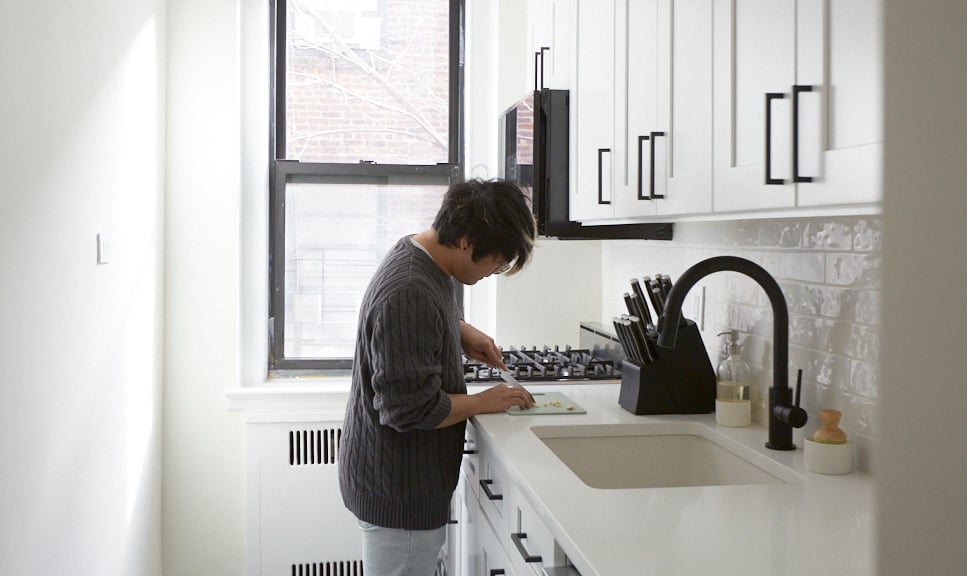
The finish line of your renovation is more than just cleanup—it’s about ensuring every detail is complete, every payment is fair, and your new space is set up to last. Here's how to stay organized.
Create a punch list and walk through your project
Before your contractor officially wraps up, schedule a walkthrough to identify any outstanding items—touch-up paint, missing fixtures, uneven grout, or minor adjustments. List them clearly in a punch list, and confirm a timeline for completion before making final payments.
Submit final payments through secure channels
Never hand over cash or unverified payments. Use Block’s progress-based payment system or another secure platform to ensure your funds are only released once the agreed-upon work is complete.
This protects you and motivates your contractor to finish strong. Final payments should coincide with your completed punch list—not before.
Prepare for upkeep and maintenance
Your new space deserves to stay as beautiful and functional as the day it was finished. Ask your contractor or designer for care instructions—how to seal stone, clean tile grout, or maintain caulk lines.
Keep digital copies of your warranties, invoices, and material details. For example, knowing your grout brand or paint sheen will make touch-ups much easier later.
Every contractor in Block’s network provides a one-year workmanship warranty, giving you confidence that if something does arise, you’ll have expert support to make it right.
Enjoy your space—and your success
A thoughtful renovation isn’t just about new finishes; it’s about creating a home that feels more comfortable, functional, and truly yours. By planning carefully, budgeting wisely, and partnering with professionals who value transparency, you’ve done more than upgrade your space—you’ve invested in your peace of mind.
Remodel with confidence through Block
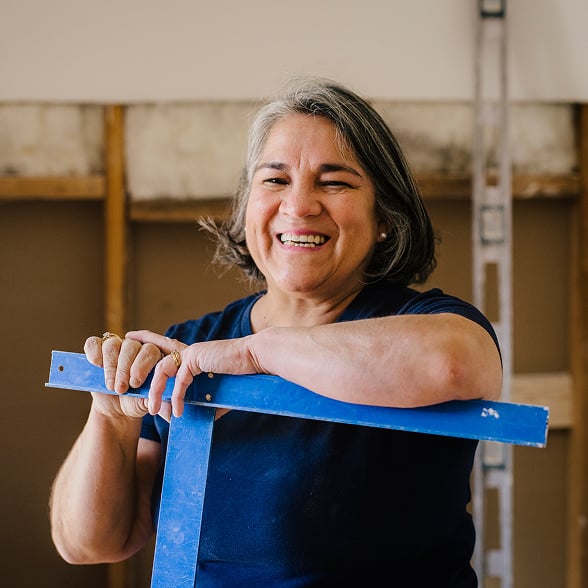
Connect to vetted local contractors
We only work with top-tier, thoroughly vetted contractors

Get expert guidance
Our renovation consultants offer expert advice, scope review, and ongoing support as needed
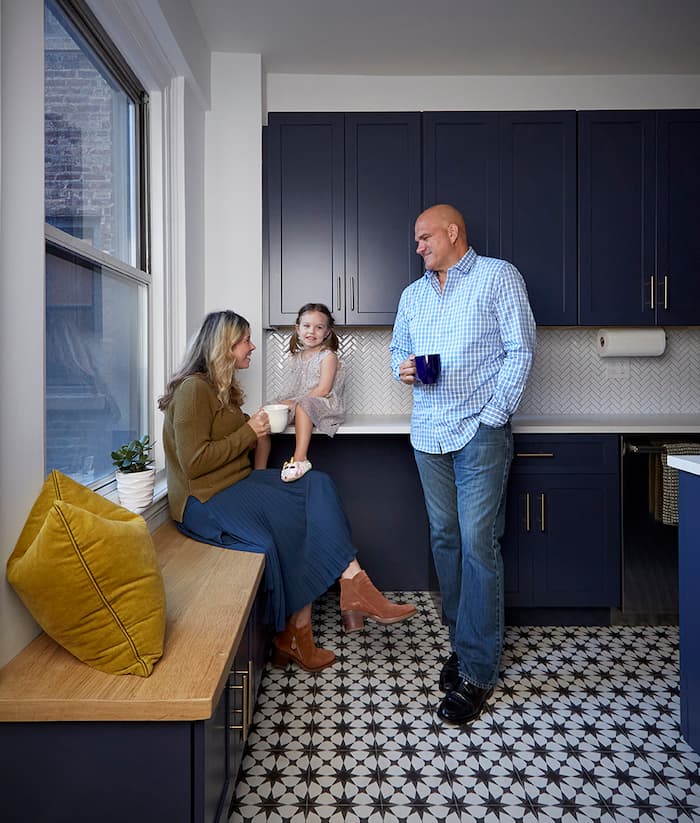
Enjoy peace of mind throughout your renovation
Secure payment system puts you in control and protects your remodel

Written by Allie Weiss
Head of Brand & Content
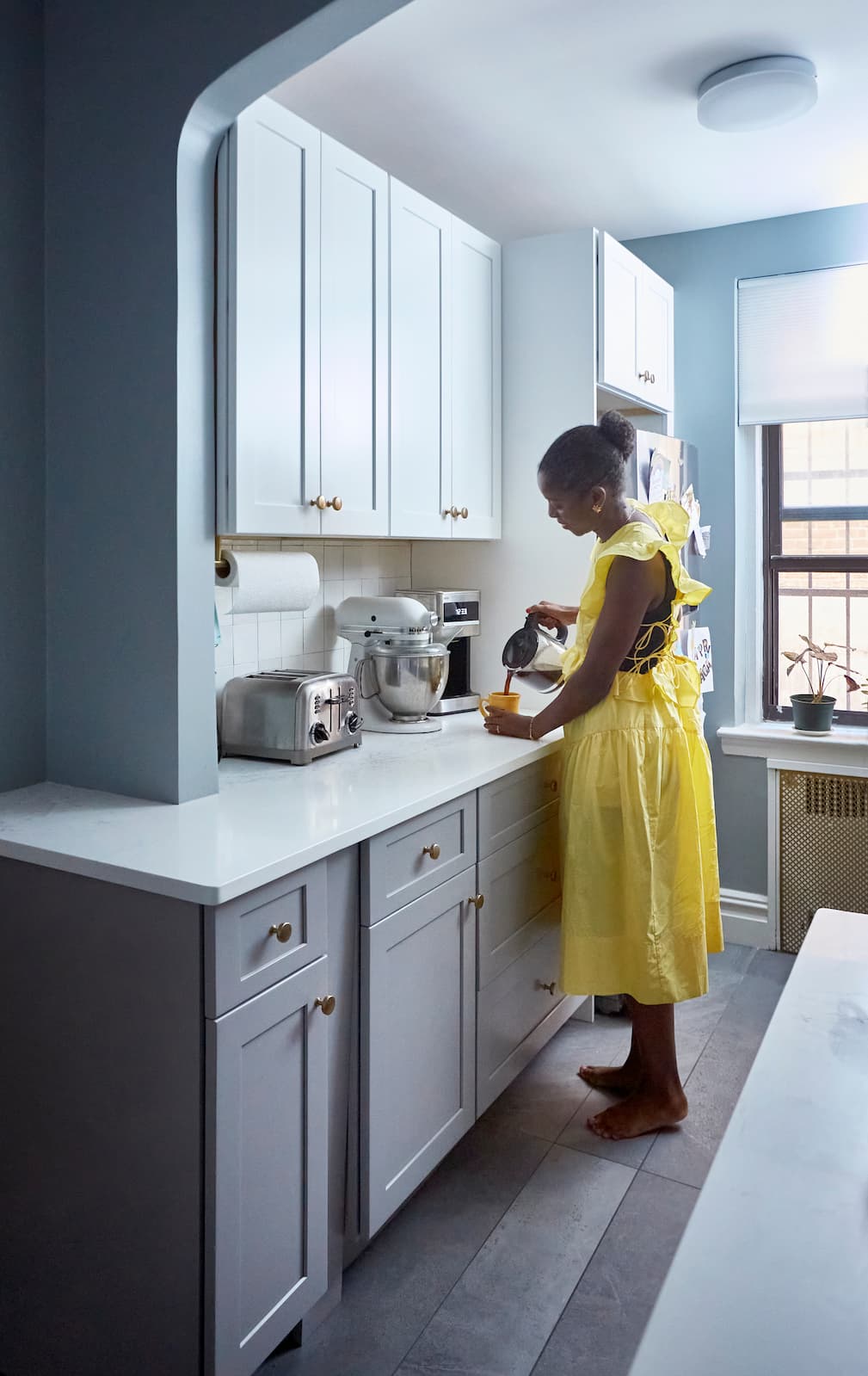
Renovate confidently with Block
Easily compare quotes from top quality contractors, and get peace of mind with warranty & price protections.
Thousands of homeowners have renovated with Block

4.5 Stars (100+)

4.7 Stars (100+)

4.5 Stars (75+)

Working with Contractors
The Block Way of Renovating: A Complete Homeowner’s Guide
11.24.2025
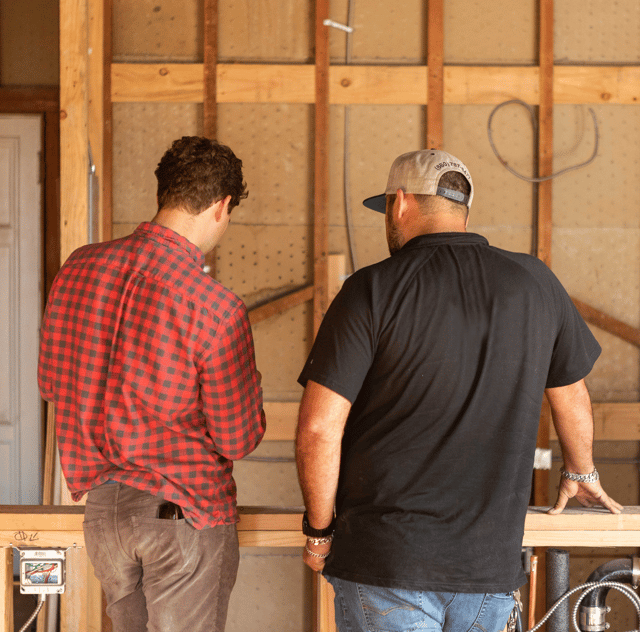
Working with Contractors
Steps to Vetting a General Contractor
11.04.2025

Planning & Logistics
How to Start Planning a Home Renovation
04.28.2025
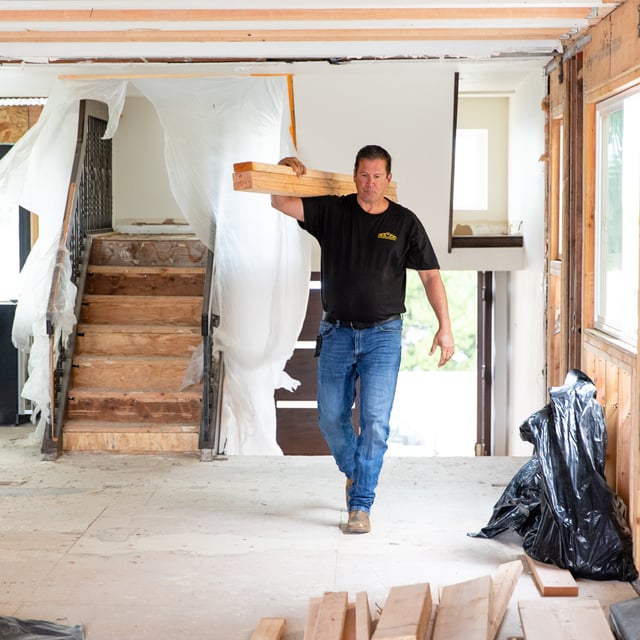
Remodeling
In What Order Should You Renovate the Rooms in Your Home?
03.07.2025

Contractors
What is an Alteration Agreement for Buildings in New York City, and How to Read One?
01.27.2025
Renovate confidently